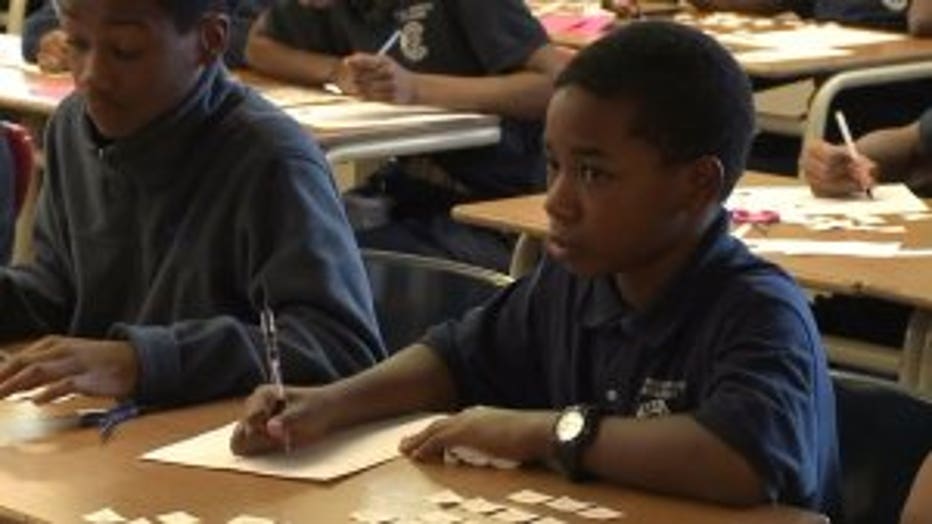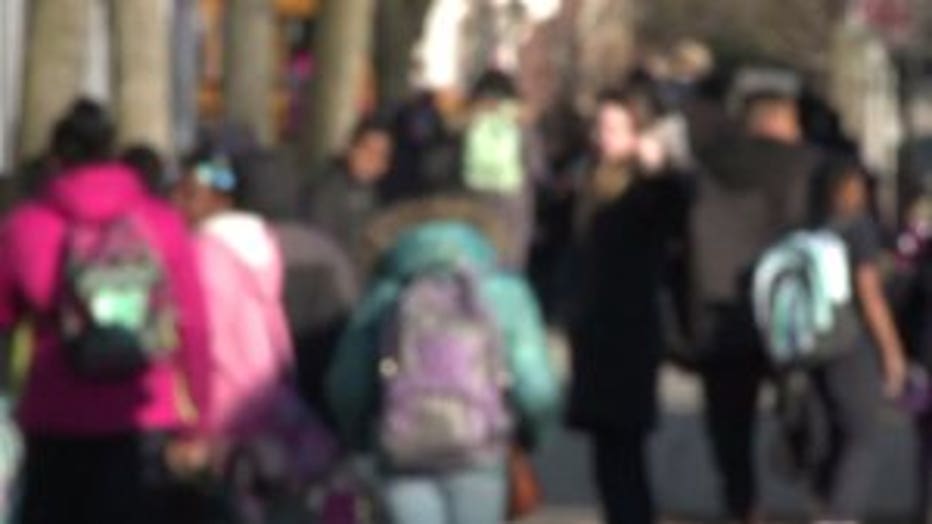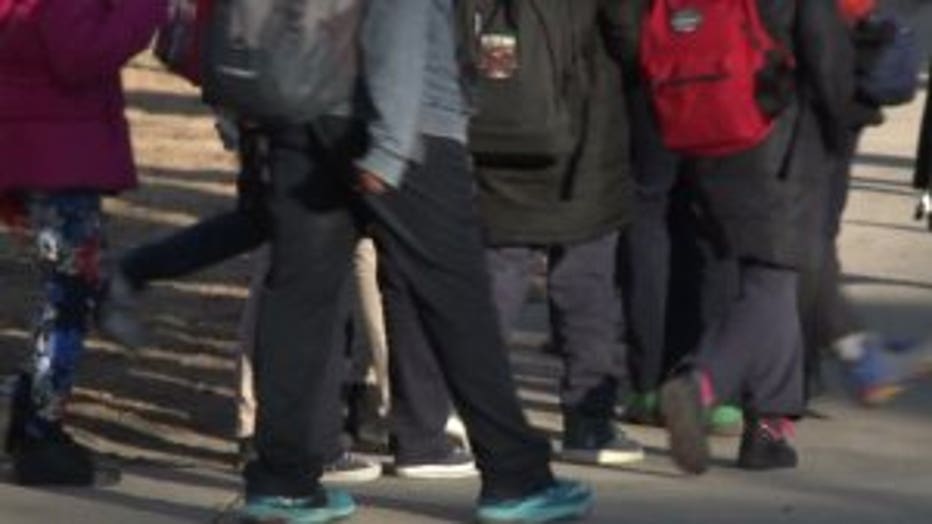"Traditional clothes, sometimes they distract:" Committee votes to send uniform proposal to full MPS board
MILWAUKEE -- The dress code in Milwaukee Public Schools (MPS) could soon be changing. An MPS Board of School Directors committee on Tuesday evening, February 14th voted to send a plan to implement uniforms for ALL students to the FULL Milwaukee Public Schools Board of School Directors without making a recommendation.

The reason there was no recommendation in support of or against the proposal is because the committee said there was confusion over the proposal. One version was given out at the meeting, and another was given out publicly.
George Washington Carver Academy of Mathematics and Science is one of about 50 schools in MPS where students already wear uniforms.
The proposal would require the rest of the 100 or so MPS schools to follow suit.
Navy blue polo-style shirts and dark khaki pants is the outfit all kindergarten through eighth grade students at George Washington Carver Academy must wear -- each and every day to class.
"Traditional clothes, sometimes they distract," said Tianna Evans, Carver Academy assistant principal.
The dress code was put in place four years ago. Since then, Evans has noticed a significant change in behavior.
"The uniform does two things. One, it gives scholars an opportunity to know there's important work to do. We dress up for work. The second thing is that it helps us to really get our scholars to embrace our identity as a school," Evans said.

Tianna Evans, Carver Academy assistant principal
That is, in part, why leaders with MPS are now pushing for uniforms in every school. Right now, individual schools must "opt in" to require students to wear uniforms. A proposal before the school board changes the system to an "opt out" approach.

According to the policy, all MPS schools would implement uniforms starting in the fall 2017 semester. The outfits will follow the same basic design -- khaki pants and a collared shirt. But each school can pick its own colors, style and price.
Schools or individual families can choose not to comply with the policy.
Many Carver parents and grandparents are in support of the district's plans. They say uniforms help cut down on bullying and stimulate learning.

"Some parents can't afford clothes, and other kids pick on them, the ones that can't," said Joe Hubbard, a parent.
"A lot of times kids focus on things that aren't important, and if they all dressed alike in uniform, to me it shows a good effort," said Floyd Janes, a grandparent.
The proposal will be taken up by the full board on February 23rd.
Meanwhile, ACLU of Wisconsin Interim Executive Director Molly Collins issued the below statement in regards to this proposal:
“As young people grow and develop their identities, they often use clothing as a way to express who they are and what they believe. This can be through a political T-shirt or a religious item such as a headscarf.
In the landmark U.S. Supreme Court case Tinker v. Des Moines Independent Community School District (1969), the court upheld the free speech rights of students to wear black armbands to protest the Vietnam War, explaining that students do not “shed their constitutional rights to freedom of speech or expression at the schoolhouse gate.”
Allowing students to choose what they wear sends an empowering message - that a student is a maturing person who is entitled to the most basic self-determination. Students should be imbued with a sense of individual self-worth rather than be treated as identical units, without options. So long as student dress choices do not disrupt the classroom, schools should be nurturing, rather than standardizing, student expression.
It does not make sense for MPS to implement strict uniform standards and punish students who do not comply. We have heard that students at Bradley Tech – which does have a school uniform policy - are receiving in-school suspensions for not complying with the dress code – for example, just for wearing jeans. This not only seems to send the message that what students wear is more important than whether they learn, but also could be a step towards exacerbating the school to prison pipeline.”

